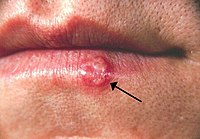
Photo from wikipedia
Fungal diseases kill more than 1.5 million and affect over a billion people. However, they are still a neglected topic by public health authorities even though most deaths from fungal… Click to show full abstract
Fungal diseases kill more than 1.5 million and affect over a billion people. However, they are still a neglected topic by public health authorities even though most deaths from fungal diseases are avoidable. Serious fungal infections occur as a consequence of other health problems including asthma, AIDS, cancer, organ transplantation and corticosteroid therapies. Early accurate diagnosis allows prompt antifungal therapy; however this is often delayed or unavailable leading to death, serious chronic illness or blindness. Recent global estimates have found 3,000,000 cases of chronic pulmonary aspergillosis, ~223,100 cases of cryptococcal meningitis complicating HIV/AIDS, ~700,000 cases of invasive candidiasis, ~500,000 cases of Pneumocystis jirovecii pneumonia, ~250,000 cases of invasive aspergillosis, ~100,000 cases of disseminated histoplasmosis, over 10,000,000 cases of fungal asthma and ~1,000,000 cases of fungal keratitis occur annually. Since 2013, the Leading International Fungal Education (LIFE) portal has facilitated the estimation of the burden of serious fungal infections country by country for over 5.7 billion people (>80% of the world’s population). These studies have shown differences in the global burden between countries, within regions of the same country and between at risk populations. Here we interrogate the accuracy of these fungal infection burden estimates in the 43 published papers within the LIFE initiative.
Journal Title: Journal of Fungi
Year Published: 2017
Link to full text (if available)
Share on Social Media: Sign Up to like & get
recommendations!